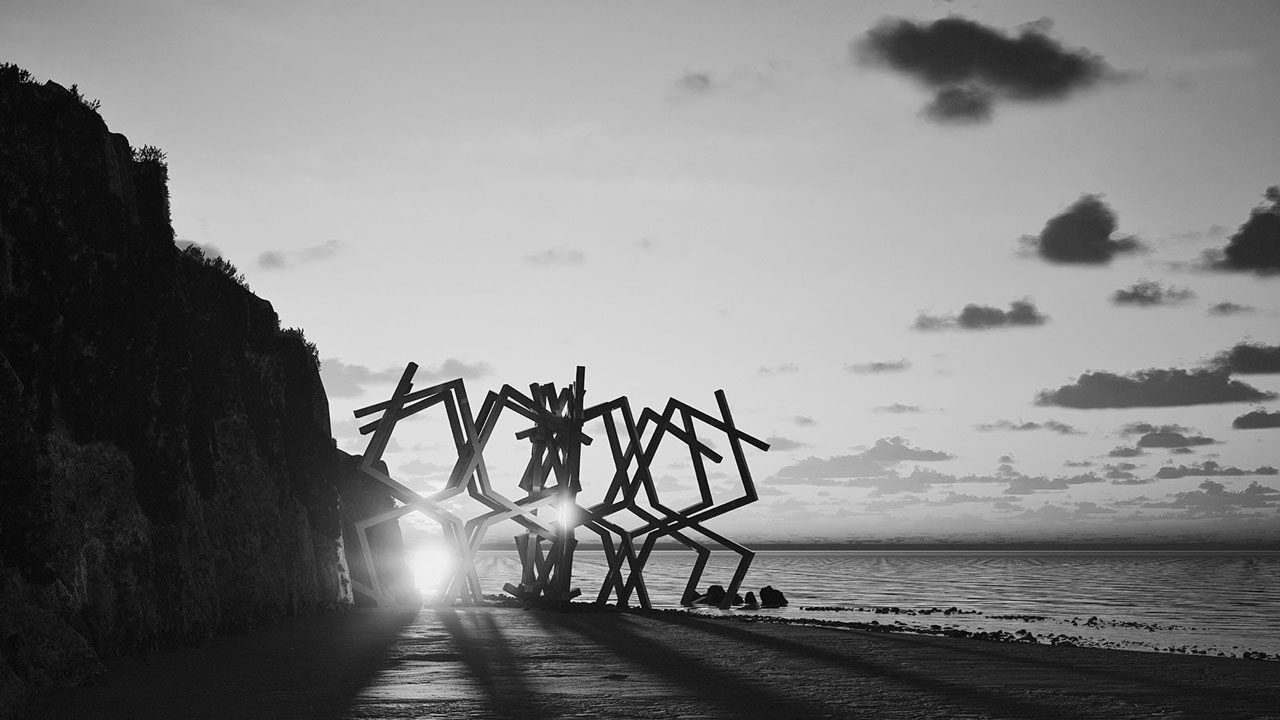ART CITIES: Istanbul-Selçuk Artut
 Selçuk Artut is an interdisciplinary artist and researcher whose work explores the intricate theoretical and practical dimensions of human-technology relations. His artistic creations delve into the evolving interplay between humanity and technology, focusing on how these interactions shape perceptions, experiences, and the boundaries of creativity. An author of four books in the past, his artistic activities are mainly focused on contemporary art practices based on technological embodiments.
Selçuk Artut is an interdisciplinary artist and researcher whose work explores the intricate theoretical and practical dimensions of human-technology relations. His artistic creations delve into the evolving interplay between humanity and technology, focusing on how these interactions shape perceptions, experiences, and the boundaries of creativity. An author of four books in the past, his artistic activities are mainly focused on contemporary art practices based on technological embodiments.
By Dimitris Lempesis
Photo: Zilberman Gallery Archive
The exhibition “Phantom Limbs”, harboring Selçuk Artut’s most recent works, paves the way to an intertwined journey towards the understanding of perception; breaking the horizon of dimensions and exploring the fragile tension between absence and presence. From his earliest to his most recent works, Selçuk Artut investigates the dynamic interplay between humanity and technology, exploring how these interactions redefine our perceptions, experiences, and communications. Through his technological artworks, Artut creates convergence points between humans and technology, dissolving established boundaries. “Phantom Limbs” is named after a physiological, psychological, and neurological phenomenon that depicts the margins of consciousness of an amputated body. This concept underscores that the body is not merely a collection of physical parts but a lived, dynamic entity extending into the world through perception and action. The exhibition explores perception as an extension of the body, locating itself amidst the perceived medium, delving on to its centrality in shaping subjective experience. Continuing Artut’s “Geomart-ut” series that are rooted in traditional geometric patterns, the exhibition harbors two new sculptures, titled “Geomart-ut-sc” series, crafted from geometric artifacts found in historical monumental structures. “Geomart-ut-sc1” echoes its form in the print titled “Planet”, which presents the sculpture against a breathtaking vista, blurring the line between reality and illusion. The exhibition continues with a two-channel video, created with creative coding, entitled “Presence in its Absence”, fragmented from patterns in Karatay Madrasa. Complementing this installation are six prints, titled “Manifold” series, that explore the myriad of possibilities stemming from the work “Presence in its Absence”. Through this body of work, Artut challenges conventional visual perception, uncovering the ambivalence embedded in the perceived world. Rooted deeply in dialectic creativity, Artut investigates the enduring relationship between technology, mathematics, and art, reinterpreting historical geometric patterns through a contemporary lens. With the work “Presence in its Absence”, developed from the intricate patterns of Karatay Madrasa in Konya, the artist reframes the geometrical patterns, long celebrated as emblems of harmony, order, and cultural continuity, into striking artifacts that embody both resilience and fragmentation. In this reimagining, Artut challenges the term “new media,” emphasizing the enduring interplay between innovation and tradition. Echoing historian Bernard Lewis’s infamous question, “What went wrong?” regarding cultural shifts in the Middle East, Artut explores how geometry, a historically universal language, creates illusions forming complex relationships between absence and presence. The exhibition creates a visual playground for the spectator, challenging and redefining the boundaries of visual and cognitive perception by presenting akin geometric patterns across various mediums. These geometric fragments engage the viewer in a dialogue where perception bridges the gap between what is seen and what is intuited. With the “Geomart-ut-sc” series, scattered through the gallery in various forms and sizes, Artut plays with the infinite possibilities of perception, forming potentialities of the object, embodying the bodily standpoint of the viewer, allowing them to explore the manifold realities of the same object. The viewer’s interaction with geometric objects is not just a visual experience but a participatory one, where each action contributes to the ongoing reorganization of the image. The duality of reality is examined not only through the sculptures but also through print entitled Planet, generated with a photo realistic approach, depicting a stunning sunset vista. This piece draws inspiration from a stunning scene in “Planet of the Apes” (1968) in which the Statue of Liberty is submerged in sand, representing a poignant symbol of a broken link to what was once a planet earth. Planet perplexes the viewer, prompting reflection on its essence as it lingers between prosperity and collapse; present yet intangible, blurring the boundaries between the real and the imagined.
Photo: Selçuk Artut, Courtesy the artist and Zilberman Gallery
Info: Zilberman Gallery, Zilberman Selected, İstiklal Mah. Piyalepaşa Bulvarı No: 32C, Beyoğlu / Istanbul, Turkey, Duration: 11/1-5/4/2025, Days & Hours: Tue-Sat 11:00-19:00, www.zilbermangallery.com/
